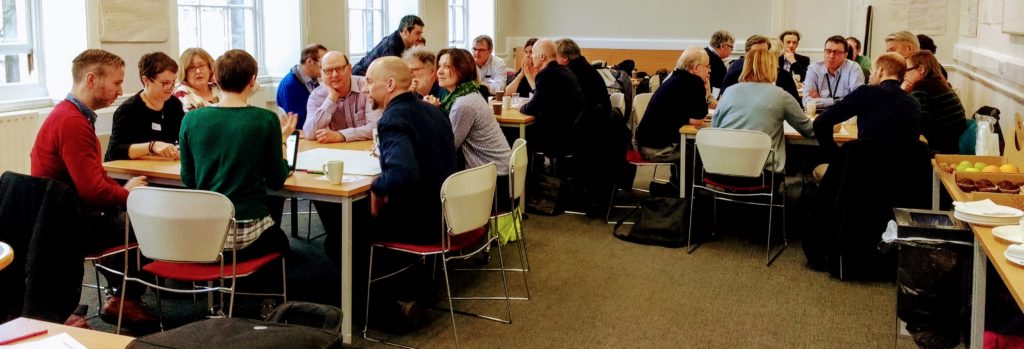My ELDeR workshop facilitation approaches are participatory –
- bringing people together to work collaboratively
- ensuring people are heard
- encouraging different voices
I see my roles as to set up the activities and then to step back and listen – only to intervene to refocus the tasks or keep time. I use techniques such as partner discussion which is then developed into group discussion to give everyone a chance to think and develop their contribution. Or I ask people to write thoughts on post-it notes individually before sharing these with the wider group to build in quiet reflection. I move groups around to get participants to work in different groupings – so they hear colleagues they might not normal speak too. (V2)
I have a role in promoting understanding of the wider context within the ELDeR workshops. We discuss widening participation, identifying barriers in their area. I give general advice on how to avoid building in barriers to participation such reliance on synchronous activities when students are based in different time zones, or provision of transcripts for video content to cater for students on low bandwidth or for whom English is a second language. For online programmes where the VLE is the home of most of the activities accessibility for disabled students is particularly relevant and I explain the importance of and ways to create accessible materials.
Participants feedback that they find the ELDeR workshops helpful because the discussion activities let them work together to find consensus – they leave with a strong sense of ownership of the outcome of the sessions.

An approaches I take to CPD is bring together groups. I am influenced by ideas of community of Practice Wenger, E. (1998) (discussed in this post). In bringing together the CMALT group I want everyone to have equal opportunities to participate e.g. there are parents and non-parents and people working full and part time on different parts of the campus. All of these are relevant in terms of who is included when meetings are arranged. Where possible the meeting are within a core day 10 to 4 so that they allow for pick up and drop of of children for those with care responsibilities. I also hold some meetings by webinar which are more flexible for people on different campuses.
The CMALT portfolio, “Core area 2: Teaching, learning and/or assessment processes” requires applicants to show that they understand their target learners. I’ve found a tension for Learning Technologists between seeing themselves as supporting the students or academic staff that they support. If learning technologists see themselves as educators, not just service providers, they can better understand their role and it gives them a broader framework for identifying successful approaches.
For the last year I have been a Career Ready mentor – a scheme for school students in their final two years of high school who show potential. They are matched with a mentor in employment for mentoring meetings and a 4 week work placement. The Career Ready scheme aims to widen participation in HE and FE, targeting students who would be the first in their family to attend university. I mentoring a student considering a career in teaching. In addition to mentoring, I arranged interview practice and a 4 week work placement. This has been a great opportunity for my mentee and an interesting CPD experience for me – e.g. I’ve investigated the school curriculum to understand my mentees exam choices and further study options. After the placement she is still considering a career in teaching and is exploring university options for undergraduate study leading to a PGDE later and has rethought her exam choices for the next year suggesting that this has been a positive and empowering experience for her (V2).
After my trip I read a history of to the University of Virginia by Bowman, R & Santos, C. (2015) which reminded me was that HE has historically been an elitist option open only to a limited group, predominately white heterosexual men from upper classes with money. Until fairly recently women or people of colour were not welcome in HE, it is important to acknowledge this history and to promote participation in higher education and equality of opportunity for learners because these rights are hard won and need to be protected. Diversity brings different perspectives and a more accurate representation of the world.
References
Bowman, R & Santos, C. (2015) Rot, Riot, and Rebellion: Mr. Jefferson’s Struggle to Save the University That Changed America. the University of Virginia Press, Charlottesville
Wenger, E. (1998). Communities of practice: Learning, meaning and
identity. Cambridge, UK: Cambridge University Press.